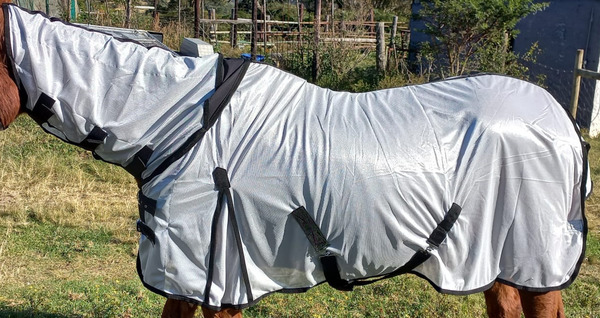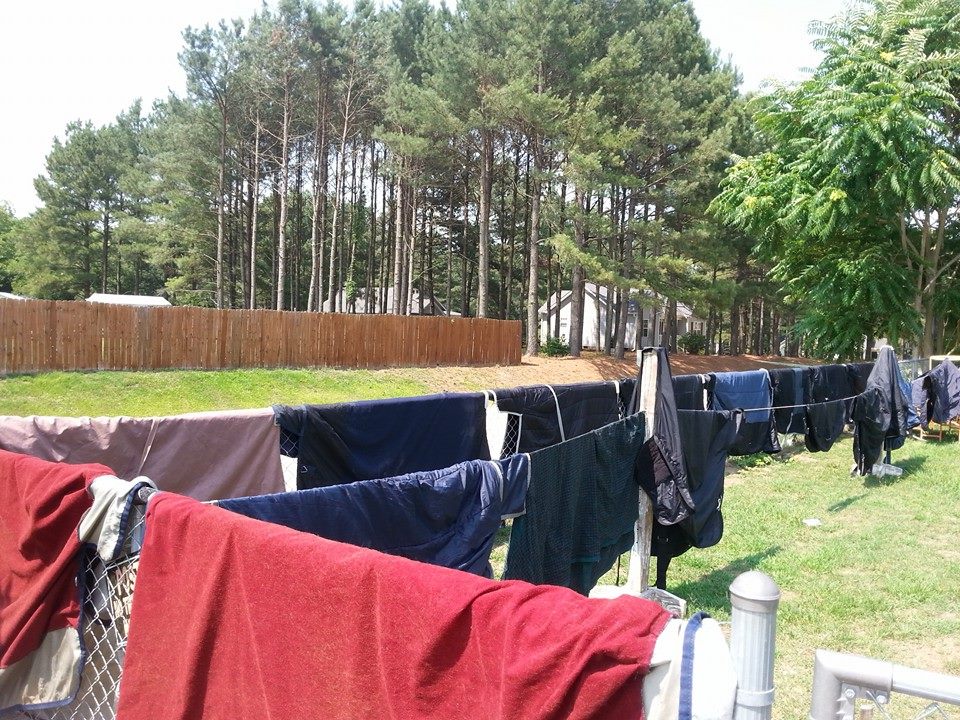Blanketing is a controversial topic in the horse-loving community. Some are adamant about covering horses, and others are against it. Why does this question get so many opinionated answers? Whether a beginner, a professional rider or somewhere in between, you must learn what’s best for you and your horse and protect them from the elements accordingly.
To Blanket or Not?

No matter what people who are intensely against horse blankets say, the research and experience suggest that blanketing is essential and, for some horses, even vital. In areas with winters and below-freezing temperatures for prolonged periods, you should blanket horses living 24/7 outside with no shelter, those that don’t grow thick hair or thin, immunocompromised and older horses.
On the other hand, healthy horses with a good body condition score adapted to the environment, those with access to shelter, those with a thick winter coat, and those with a nutritious diet might not always require blanketing. The general recommendation is that clipped horses are covered when the weather gets chilly, even if they’re stabled.
Temperature isn’t the only factor to consider. Blanketing requires a more dynamic and individual approach. It would be best if you committed to it daily, and it requires planning. Putting a blanket on when winter starts and taking it off in early spring is unacceptable. For instance, the horse might not need a blanket on a pleasant winter’s day when the temperature is -5℃, and it’s sunny rather than windy. However, these horses might require blanketing if it is +5℃ and raining, and you can’t bring them inside for a chance to dry up.
How Many Types of Horse Blankets Are There?
There are two main types of covers for horses: blankets with a fill to keep them warm and lightweight sheets for horses with no fill, and they come in two varieties – turnout and stable. Turnout sheets and blankets are made of waterproof materials to keep the horse dry when outside. On the other side, stable blankets and sheets are designed for wearing inside and aren’t waterproof.
How Do You Pick the Right Blanket for a Horse?

Just like you have various clothes in your wardrobe for different weather occasions, your horse should do, too. Choosing the right outerwear option can be challenging, but the following tips make it much more effortless.
Consider Warmth
You may find it surprising, but thinking of how you shop for your bedding can help you understand horse blanket warmth. Human bedding consists of sheets, which are very thin and provide little or no warmth and warmer, bulkier and cosier blankets. The same is accurate for horse sheets and blankets – the first option is lightweight, while the other is considerably warmer. The fill weight is usually a warmth indicator, so here’s a rough breakdown of the blanket fill:
- Sheets – 0 gr of fill;
- Lightweight blankets – 50-100 gr fill;
- Medium-weight blankets – 150-250 gr of fill;
- Heavy-weight blankets – +300 gr of fill.
Turnout or Stable?
Humans need waterproof clothes on rare occasions – when we’re out in the rain or snow, most likely when hiking, camping or skiing. While people may be fine outside in a sweater on a clear day, horses usually aren’t. If your horse is going to be outside, it’s best to use a waterproof cover because they often lay down on the ground, which only looks dry to us. If the blanket or sheet absorbs moisture, it can get damp. And when the wet cover meets cold air, it’ll make the horse chillier than he was in the first place without it.
As their name suggests, stable sheets and blankets are only for indoor use, as they aren’t waterproof. Contrarily, turnout sheets and blankets, as waterproof, are suitable for both inside and outside and are waterproof. Turnouts are also more resilient to outdoor conditions, such as uneven terrain (or unforgiving pasture companions!). That’s due to their thicker denier.
How Do You Fit a Horse Sheet?
Finding the perfect fit for your horse’s blanket begins with understanding his size. It should feel like hugging your horse even when you’re not there.
Use cloth tape to measure your horse for a blanket, starting at the centre of his chest and moving along his side to the tip of his buttocks where the “cheek” meets the tail. We recommend having a friend assist you in keeping the tape stretched and level while taking measurements of the broadest portion of his shoulder. Your horse’s exact size is the number of inches (note: some blanket brands run a little large or small; therefore, we encourage reading through the reviews posted by horse owners like you!).
A horse shouldn’t experience rubs or sores from a correctly fitting blanket. A properly fitting blanket won’t bind around the neck, allowing the horse to use their shoulder fully or lower their head. Nor should their withers be under any pressure.
Blankets come in various cuts and patterns, and some manufacturers even cater to specific body types, such as withered larger chest quarter horses and high-withered, narrower-chest thoroughbreds. Some sheets for horses are shorter, reaching just below the elbow, while others are longer, reaching below the elbow and nearly to the knee. Some coverings—usually turnouts—have a tail flap, while others— stable blankets or breed-specific for Saddlebreds—don’t.
